Arthur James Cain FRS was a British evolutionary biologist and ecologist. He was elected a Fellow of the Royal Society in 1989.

The grove snail, brown-lipped snail or lemon snail is a species of air-breathing land snail, a terrestrial pulmonate gastropod mollusc.

The white-lipped snail or garden banded snail, scientific name Cepaea hortensis, is a large species of air-breathing land snail, a terrestrial pulmonate gastropod mollusc in the family Helicidae. The only other species in the genus is Cepaea nemoralis.

Carabus nemoralis is a ground beetle common in central and northern Europe, as well as Iceland and Canada. While native to Europe, it has been introduced to and is expanding its range throughout North America.
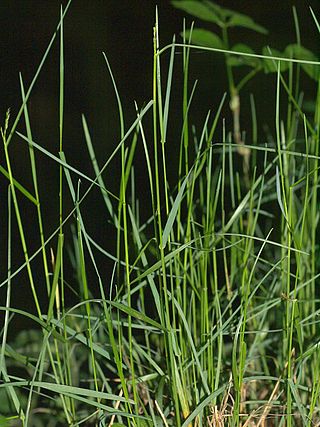
Poa nemoralis, the wood bluegrass, is a perennial plant in the family Poaceae. The late-growing grass is fairly nutritious for livestock, which feed on it in the autumn, and it is used as a lawn grass for shady situations.
The elm cultivar Ulmus 'Nemoralis' was listed by Schelle in Beissner et al. (1903), as U. campestris f. nemoralisHort. Considered "possibly U. carpinifolia " by Green.
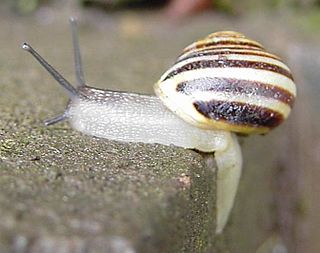
Cepaea is a genus of large air-breathing land snails, terrestrial pulmonate gastropod molluscs in the family Helicidae. The shells are often brightly coloured and patterned with brown stripes. The two species in this genus, C. nemoralis and C. hortensis, are widespread and common in Western and Central Europe and have been introduced to North America. Both have been influential model species for ongoing studies of genetics and natural selection. Like many Helicidae, these snails use love darts during mating.

The Mexican gray squirrel is a tree squirrel in the genus Sciurus native to Guatemala and eastern and southern Mexico. It has been introduced to the Florida Keys.
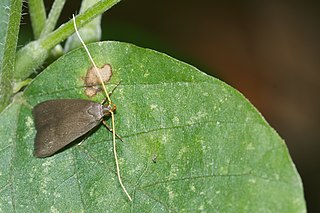
The Lecithocerinae are a subfamily of small moths in the family Lecithoceridae. They are found worldwide, but most species occur in South Asia. The subfamily is characterized by the male genitalia with a bridge-like structure connecting the tegumen and the valva, and the uncus almost always is vestigial with two lobes at the dorsal base, only exceptionally united into a broad plate, but never as a thorn or spine.

Agrotera nemoralis, the beautiful pearl, is a species of moth of the family Crambidae. It was first described by Giovanni Antonio Scopoli in his 1763 Entomologia Carniolica.

Solidago nemoralis is a species of flowering plant in the family Asteraceae. It is native to North America, where it is widely found in Canada and the United States. Its common names include gray goldenrod, gray-stem goldenrod, old-field goldenrod, field goldenrod, prairie goldenrod, dwarf goldenrod, and dyersweed goldenrod.
Renia nemoralis, the tardy renia or chocolate renia moth, is a litter moth of the family Erebidae. It is found in the US from Illinois to south-eastern Massachusetts south to Florida and Texas. The species was first described by William Barnes and James Halliday McDunnough in 1918.

Phacelia nemoralis is a species of flowering plant in the borage family known by the common name shade phacelia. It is native to the west coast of the United States from Washington to central California, where it grows in moist, usually forested areas along the coastline and in the coastal mountain ranges.
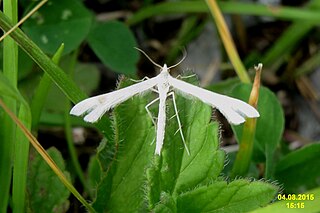
Platyptilia nemoralis is a moth of the family Pterophoridae. It is found from Europe, through Russia to Japan.
Neotimyra is a genus of moths in the family Lecithoceridae.
Neotimyra gyriola is a moth in the family Lecithoceridae. It was described by Kyu-Tek Park in 2011. It is found on New Guinea.
Neotimyra milleri is a moth in the family Lecithoceridae. It was described by Kyu-Tek Park in 2011. It is found on New Guinea.
Neotimyra senara is a moth in the family Lecithoceridae. It was described by Kyu-Tek Park in 2011. It is found on New Guinea.
Neotimyra warkapiensis is a moth in the family Lecithoceridae. It was described by Kyu-Tek Park in 2011. It is found on New Guinea.
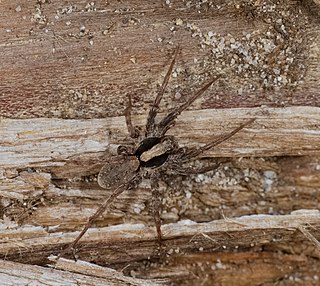
Xerolycosa nemoralis, or the burnt wolf spider, is a species of wolf spider found from western Europe eastwards to the Pacific.











